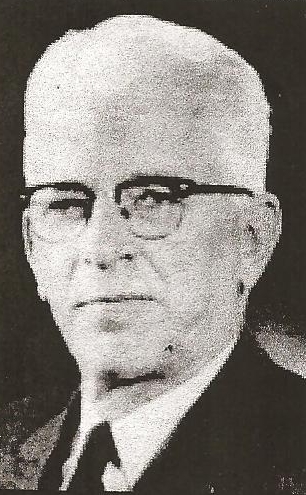PAUL MANGELSDORF, BOTANIST, 90; TRACKED CORN TO PRIMITIVE MAIZE By Glenn Fowler.
Paul C. Mangelsdorf, a botanist whose cross-breeding of corn and other grains earned him a world reputation, died in his sleep Saturday at the Carol Woods Retirement Community in Chapel Hill, North Carolina., where he lived. He had celebrated his 90th birthday two days earlier.
Dr. Mangelsdorf, who taught at Harvard University for 28 years before he retired in 1968 as Fisher Professor of Natural History, traced the origins of modern corn to the primitive maize grown by native Americans.
Through back-breeding, he produced maize that resembled 7,000-year-old specimens found in Mexico.
Between Man and Starvation
"Corn is one of perhaps not more than 15 species of cultivated plants of worldwide importance," Dr. Mangelsdorf wrote, "each one the principle source of food for millions of people, which quite literally stand between mankind and starvation."
After his formal retirement, Professor Mangelsdorf continued his cross-pollination experiments at the University of North Carolina.
Seven years ago he supplied the crossbred seeds from which an Argentine colleague produced corn that grows perenially rather than annually, relieving farmers of the need to plant a new crop every spring.
He also helped develop hybrid seed corn that did not require the time-consuming process of removing corn tassels by hand, and he was the first to develop winter wheat with rust-resistant stems. Grains from his experiments are now widely grown in the Southwest and Latin America.
Research Began in Kansas
He was born in Atchison, Kan., where his father sold seeds and plants to farmers. He began his research at Kansas State University.
He was the author of "Corn: It's Origin, Evolution and Improvement," published in 1974, and wrote numerous articles for scientific journals about plant breeding. He was a past president of the Genetics Society of America, the American Society of Naturalists and the Society for Economic Botany.
He is survived by two sons; three sisters; a brother; seven grandchildren, and three great-grandchildren.
-----------------------------------------------------------
Paul received his B.S. degree in Agronomy from Kansas State University in 1921.
-----------------------------------------------------------Kansas Farmer Jan. 6:31 (1962)
Much of our knowledge of corn- its origin, genetics, and methods of producing hybrids- was discovered by Paul C. Mangelsdorf (1899-1989). His work greatly contributed to the status of corn as the most important feed crop in the world and became a model for production of hybrids of other crops.
Mangelsdorf was born in Atchison, Kansas and "never thought about going to college anywhere except at K-State." After graduating from K-State, he earned a Sc.D. degree from Harvard University in 1925, joined the Texas Agricultural Experiment Station, and then returned to Harvard as a Professor of Botany and eventually Director of the Harvard Botanical Museum.
Research by Mangelsdorf at Harvard concerned economic plants, particularly corn and species for condiments, insecticides, and medicines. He published widely on the genetics of corn and the origin of races of maize (corn) grown in Latin America and, with Donald F. Jones, another K-State Agronomy graduate, held the original patent for using genetic male sterility to produce hybrid corn seed. Resistance to stem rust in 'Mediterranean Hope' wheat was identified by Mangelsdorf and incorporated into several varieties of Kansas wheat in the 1960's.
Harvard University designated Mangelsdorf as one of its 12 most outstanding professors and named a distinguished professorship in his honor. He was elected to the National Academy of Sciences in 1945 and received an honorary Doctor of Laws degree from K-State in 1961 for his contributions to agriculture and society.
PAUL MANGELSDORF, BOTANIST, 90; TRACKED CORN TO PRIMITIVE MAIZE By Glenn Fowler.
Paul C. Mangelsdorf, a botanist whose cross-breeding of corn and other grains earned him a world reputation, died in his sleep Saturday at the Carol Woods Retirement Community in Chapel Hill, North Carolina., where he lived. He had celebrated his 90th birthday two days earlier.
Dr. Mangelsdorf, who taught at Harvard University for 28 years before he retired in 1968 as Fisher Professor of Natural History, traced the origins of modern corn to the primitive maize grown by native Americans.
Through back-breeding, he produced maize that resembled 7,000-year-old specimens found in Mexico.
Between Man and Starvation
"Corn is one of perhaps not more than 15 species of cultivated plants of worldwide importance," Dr. Mangelsdorf wrote, "each one the principle source of food for millions of people, which quite literally stand between mankind and starvation."
After his formal retirement, Professor Mangelsdorf continued his cross-pollination experiments at the University of North Carolina.
Seven years ago he supplied the crossbred seeds from which an Argentine colleague produced corn that grows perenially rather than annually, relieving farmers of the need to plant a new crop every spring.
He also helped develop hybrid seed corn that did not require the time-consuming process of removing corn tassels by hand, and he was the first to develop winter wheat with rust-resistant stems. Grains from his experiments are now widely grown in the Southwest and Latin America.
Research Began in Kansas
He was born in Atchison, Kan., where his father sold seeds and plants to farmers. He began his research at Kansas State University.
He was the author of "Corn: It's Origin, Evolution and Improvement," published in 1974, and wrote numerous articles for scientific journals about plant breeding. He was a past president of the Genetics Society of America, the American Society of Naturalists and the Society for Economic Botany.
He is survived by two sons; three sisters; a brother; seven grandchildren, and three great-grandchildren.
-----------------------------------------------------------
Paul received his B.S. degree in Agronomy from Kansas State University in 1921.
-----------------------------------------------------------Kansas Farmer Jan. 6:31 (1962)
Much of our knowledge of corn- its origin, genetics, and methods of producing hybrids- was discovered by Paul C. Mangelsdorf (1899-1989). His work greatly contributed to the status of corn as the most important feed crop in the world and became a model for production of hybrids of other crops.
Mangelsdorf was born in Atchison, Kansas and "never thought about going to college anywhere except at K-State." After graduating from K-State, he earned a Sc.D. degree from Harvard University in 1925, joined the Texas Agricultural Experiment Station, and then returned to Harvard as a Professor of Botany and eventually Director of the Harvard Botanical Museum.
Research by Mangelsdorf at Harvard concerned economic plants, particularly corn and species for condiments, insecticides, and medicines. He published widely on the genetics of corn and the origin of races of maize (corn) grown in Latin America and, with Donald F. Jones, another K-State Agronomy graduate, held the original patent for using genetic male sterility to produce hybrid corn seed. Resistance to stem rust in 'Mediterranean Hope' wheat was identified by Mangelsdorf and incorporated into several varieties of Kansas wheat in the 1960's.
Harvard University designated Mangelsdorf as one of its 12 most outstanding professors and named a distinguished professorship in his honor. He was elected to the National Academy of Sciences in 1945 and received an honorary Doctor of Laws degree from K-State in 1961 for his contributions to agriculture and society.
Family Members
-
![]()
Albert John Mangelsdorf
1896–1989
-
![]()
Carl Frederick Mangelsdorf
1897–1899
-
![]()
Louise Helen Mangelsdorf Stauffer
1901–2002
-
![]()
Theodore August "Ted" Mangelsdorf
1902–1979
-
![]()
Dorothea Christina "Dosie" Mangelsdorf Paulsen
1904–2002
-
![]()
Harold Gustav Mangelsdorf
1907–1990
-
![]()
Helen Charlotte Mangelsdorf O'Dell
1909–1997
-
![]()
Anna Charlotte Mangelsdorf
1875–1891
-
![]()
August Friedrich Mangelsdorf
1877–1944
-
![]()
Friedrich Wilhelm "Fred" Mangelsdorf
1878–1977
-
Ernst Andreas Mangelsdorf
1880–1962
-
![]()
Charlotte Dorothea Mangelsdorf Neve
1882–1979
-
![]()
Franz Heinrich "Frank" Mangelsdorf
1883–1958
-
![]()
Bertha Wilhelmina Mangelsdorf Luntey
1885–1974
-
![]()
Marie Louise Mangelsdorf Schmeling
1888–1973
-
![]()
Karolina Sophie "Carol" Mangelsdorf Collins
1889–1982
Sponsored by Ancestry
Advertisement
Records on Ancestry
Advertisement



























